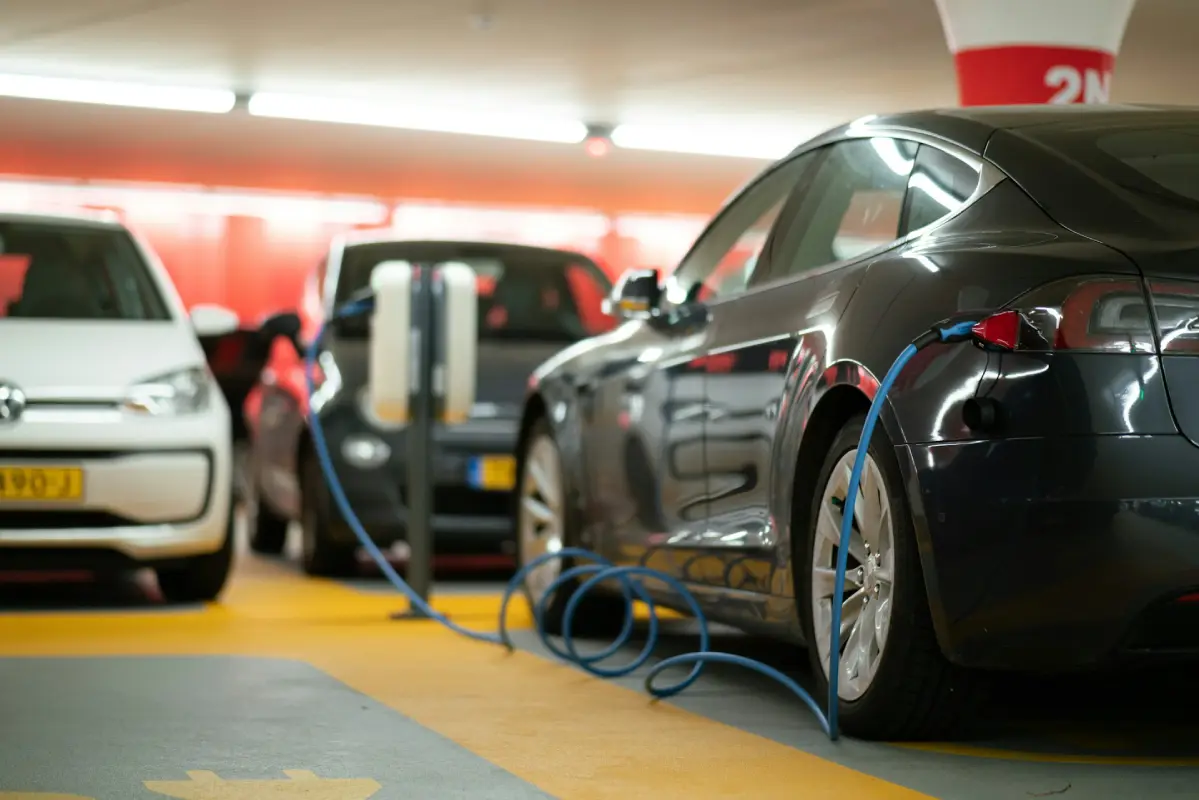The Future of Commercial Electric Vehicle Charging: What Businesses Need to Know
Electric vehicles (EVs) will become mainstream in 2025, transforming personal and corporate fleets. Global EV sales have surged in recent years, reflecting a significant shift in transportation norms. What was once considered optional perks—EV chargers—are now considered essential infrastructure and smart, future-ready investments. Businesses of all sizes seek ways to establish a presence in this new electric era.
Offering a Blink commercial EV charging station is one strategic approach many are adopting to meet growing driver demand and new regulatory requirements. Beyond compliance, such installations reflect a proactive embrace of technology that appeals to mobility-focused consumers and employees alike. The presence of public and private sector grants and mandates supporting infrastructure growth means the best time to consider installation is now, not later.
Contents
- 1 Key Benefits of Installing Commercial EV Chargers
- 2 Essential Features to Consider in Commercial EV Charging Solutions
- 3 Installation and Maintenance Considerations
- 4 Energy Supply, Load Management, and Sustainability
- 5 Data Privacy and Security
- 6 Future Trends and Industry Innovations
- 7 Steps to Get Started With Commercial EV Charging
- 8 Final Thoughts
Key Benefits of Installing Commercial EV Chargers
Early adopters of commercial EV charging recognize benefits far beyond environmental stewardship. One of the most immediate advantages is increased retention and satisfaction among customers, tenants, and employees. Shoppers and guests are more likely to extend their stay or choose one business over another if they know that reliable charging is available onsite. Several retail and hospitality studies have shown that customers who use onsite chargers often spend more time and make larger purchases during their visits.
- Employee Productivity & Retention: Workplace charging supports a healthy commute/lifestyle balance, helping companies attract and keep top talent in a competitive hiring climate.
- Enhanced Customer Experience: Charging options set a business apart and help foster a sense of loyalty among eco-conscious visitors who prioritize sustainability during their purchasing decisions.
- Tenant Attraction: Real estate and commercial property managers report that buildings with EV infrastructure have higher occupancy rates and can often command premium lease rates.
Integrating innovative energy management with commercial chargers strategically allows businesses to schedule charging during off-peak hours, reduce strain on power systems, and even lower ongoing energy costs. These savings, combined with the positive public image and potential for new revenue streams (such as paid charging services), make the investment especially appealing.
Essential Features to Consider in Commercial EV Charging Solutions
Selecting the right EV charging solution is much more than simply installing the hardware. Today’s leading commercial chargers are built to support scalability—in other words, they allow additional units to be connected down the road as EV usage grows. This approach protects against costly retrofits and upgrades.
- Scalable Infrastructure: Commercial sites benefit from systems designed to expand as both EV adoption and vehicle charging speed increase. This ensures the investment stays relevant for future vehicle models and user growth.
- Advanced Network Management: Cloud-based controls provide essential features like remote diagnostics, automated reporting, and the ability to set pricing, change access permissions, and update software in real-time. This is critical for multi-site businesses or operators managing several locations.
- Safety & Accessibility: Chargers must be robust, weather-resistant, and compliant with the Americans with Disabilities Act (ADA) to ensure all users, including those with mobility challenges, can access and operate them safely and independently. Certifications and safety standards further guarantee these systems work reliably under all conditions.
Considering these features together helps ensure the charging solution fits current needs without limiting the potential for future innovation.
Installation and Maintenance Considerations
Proper installation is a cornerstone of successful commercial EV charging deployment. The process starts with a thorough site assessment to determine the best charger location and the building’s existing power capacity, parking design, and future scalability. Working with a professional and experienced EV installation team grants access to expertise with local permitting, compliance codes, and utility company requirements. These experts can advise on the type of charger (Level 2, DC fast) best suited to business goals, available incentives, and long-term operational requirements.
Once operational, commercial chargers require regular safety inspections, software updates, and hardware checks to remain safe and reliable. Building a maintenance plan that addresses cable integrity, vandal resistance, and network security is essential for ensuring long-term user confidence and protecting the organization from unexpected downtime or liability.
Energy Supply, Load Management, and Sustainability
As the number of EV chargers increases, so does the demand they place on a site’s energy infrastructure. Load balancing is now a priority for facility managers seeking to avoid costly electrical upgrades, minimize peak demand charges, and support sustainability targets. Coordinating EV charging during periods of lower energy use or when renewable electricity is available increases efficiency and can reduce overall power costs.
Forward-thinking business sites pair their chargers with onsite solar panels or purchase clean energy credits to offset usage. Insights from the International Energy Agency highlight that commercial buildings are critical levers in the quest for global energy efficiency. Incorporating EV charging into larger energy management strategies drives measurable gains for operational budgets and the environment, setting a strong example for competitors and partners.
Data Privacy and Security
Modern commercial EV networks handle sensitive user data, payment information, and access credentials. That means cybersecurity cannot be an afterthought. Chargers and associated software suites must incorporate robust security protocols, including encryption of all transmitted data and secure access management. Businesses should ensure their charging stations comply with relevant privacy and payment security standards.
Regular software updates, password management policies, and employee cybersecurity training play a significant role in defending user information and company networks from threats. As data compliance laws evolve rapidly, especially in regions with strict privacy standards, it is wise to partner with technology providers who prioritize ongoing compliance to safeguard against penalties or data breaches.
Future Trends and Industry Innovations
Advancements in charging technology and supportive legislation are accelerating the adoption rate of electric vehicles in commercial settings. Wireless charging pads, which allow seamless “park and charge” without plugs or cables, are moving from pilot tests to practical installations. Likewise, ultra-fast charging solutions are installed at key locations to minimize downtime and serve high-volume users, such as commercial fleets and long-distance travelers.
Fleet electrification introduces fresh complexity and new opportunities for service expansion and specialized infrastructure. The development of flexible fleet charging options means delivery services, rental companies, and government agencies can transition more efficiently and profitably. Keeping up with shifting EV charging infrastructure trends remains vital. Innovations in battery storage, smart grid integration, and government incentives are poised to reshape what’s possible—and what’s expected—in commercial EV charging.
Steps to Get Started With Commercial EV Charging
- Assess Your Site: Evaluate parking patterns, user demand, and available power infrastructure. This informs us of what type and quantity of chargers are feasible for the location.
- Budget for Now and Later: Consider immediate equipment and installation costs and long-term operational, software, and upgrade expenses. Remember to include projections for increased charger use as EV adoption grows.
- Work With Trusted Partners: Choose installation professionals with a proven track record in commercial projects and knowledge of local and national regulations.
- Leverage Incentives: Research federal, state, municipal, and utility incentives, rebates, and grants to help offset the initial investment and speed up the return on investment.
- Design for Scalability: Plan the electrical and infrastructure layout for straightforward, cost-effective expansion in response to future needs.
Final Thoughts
The rise of EVs fundamentally transforms how businesses approach customer experience and energy management. Commercial EV charging aligns organizations with growing consumer expectations, improves employee and tenant satisfaction, and places them at the forefront of a significant technology shift. Businesses that act now will be well prepared to prosper as EV adoption accelerates and regulatory demands evolve, while also playing a meaningful part in promoting sustainability within their communities.

